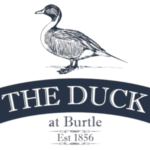Wildlife
Burtle lies at the western end of the area of Somerset now known as the Avalon Marshes. Most of the area is low lying and over the millennia the marshy land gradually built up a layer of peat over a substrate of clay, interspersed were sandy banks or burtles, hence the name of the village, which are slightly higher than the surrounding land and more suited to settlement. The peat has now widely been removed, formerly for burning and more recently for horticulture. Much of the rest of the area is farmland, with dairy and beef cattle and sheep. Little land is used for arable crops but some maize is grown for animal feed and grass is cut for silage or hay.
The habitat is now largely that of lowland wet meadows divided by drainage ditches known as rhynes (pronounced reens). Some of the worked out peat workings have reverted or have been restored to reed fringed lakes and pools. There are some small wooded areas. At the eastern side of the village is the nature reserve known as Catcott lows owned by Somerset Wildlife Trust which is largely a wet meadow which floods in winter and is a major attraction for hundreds of wildfowl. There is also a small heathland area, home to some rare plants and insects, and area of deeper reed fringed water. There are three hides for viewing the wildlife, two overlooking the wet meadow and a tower hide overlooking the fen. There are other nearby reserves at Westhay Moor (SWT) Shapwick Heath (Natural England) and Ham Wall (RSPB) all providing great opportunities for bird and wildlife watching and a wide range of species have been recorded.
Birds
In winter large numbers of water birds are attracted to the shallow flooded areas especially at Catcott Lows. Mute Swans, Canada and Greylag Geese, Wigeon, Teal, Shoveller and Pintail are all very common. Large flocks of Lapwing feed in the fields and smaller numbers of Snipe feed in marshy areas. Such large numbers of birds will attract birds of prey, most commonly seen are Buzzard, Kestrel and Sparrowhawk but Peregrine and Marsh Harrier are frequently seen and occasionally Hen Harrier and Merlin . Herons can be seen almost anywhere but more often by water and in recent years Little Egret and the much rarer Great White Egret have become established in the area. The squealing call of the Water Rail is heard in the reed beds but the bird is not often seen, Coots and Moorhens are common and the bigger rhynes may be visited by Kingfishers.
Thousands, and sometimes millions , of Starling come to the area in winter and form huge roosts in the reed beds of the nearby nature reserves at Shapwick and Ham Wall, their murmurrations have become well known and a major attraction in the winter months. Large pre roost flocks often gather in large trees or on pylons in the village and will all of a sudden fly off in a cloud of birds. Barn and Tawny Owls are resident around the village, the smaller Little Owl is sometimes seen and some years the area attracts wintering Short-eared Owls. Fields, hedges and gardens are home all year to commoner resident birds.
The large flocks of duck, waders and starlings depart in early spring and but soon the summer migrants arrive with Swallow, House Martin and warbler species such as Blackcap, Whitethroat Chiff Chaff and, in wetter areas, Sedge and Reed Warblers being common ,while you may be lucky enough to hear the reeling song of the Grasshopper Warbler . Cuckoos are more often heard than seen and the migrant falcon the Hobby is sometimes seen hunting for dragonflies or small birds such as martins, Shapwick Heath reserve often host large numbers of these small dashing falcons in spring. Most of the commoner resident species nest in the area, there are several small rookeries and many village houses have their nesting House Sparrows, some have nesting House Martins and some chimneys occupied buy Jackdaws and barns have nesting Swallows. A few duck species remain to breed and sometimes our only summer migrant duck the Garganey is seen at Catcott Lows reserve and probably breeds in the area.
During spring and autumn other scarce or rare species may pass though on migration, wading species such as Whimbrel, a close relative of the Curlew, Black-tailed Godwit and Ruff maybe attracted to Catcott Lows while Hoopoe, Glossy Ibis, Spoonbill and Red kite have been noted in recent years. By the autumn large numbers of Swallows and Martins gather on overhead wires before departing in late September and before long the ducks return and Fieldfares and Redwings arrive to feed on hedgerow berries and the Starling flocks gradually build up their numbers.
Links
Somerset Ornithological Society:
www.somersetbirds.net
RSPB:
www.rspb.org.uk
Natural England:
www.gov.uk
Somerset wildlife Trust
www.somersetwildlife.org
Somerset Invertebrates group
www.somerc.com/somerset+invertebrates+group
Somerset Mammals Group
www.somerc.com/somerset+mammals+group
Mammals
Although mammals are less frequently seen than birds all the commoner species can be found in the area, Badger, Fox, Roe Deer and Rabbit are all fairly common with Hare, Grey Squirrel, Stoat, Weasel and various species of mice and vole all recorded. Otters are also sometimes seen in the rhynes but are more often recorded in the nature reserves at Westhay and Shapwick. Several species of bat can also be seen, most often at dusk.
Other wildlife
A wide of invertebrate species can be found wherever the habitat is right. Dragonflies are found mainly in the wetter areas and butterflies and night flying moths frequent meadows and gardens. Grass Snakes are sometimes seen and Adders can sometimes be found at the Shapwick and Ham Wall reserves. Ponds and rhynes are home to toads, frogs and newts.






